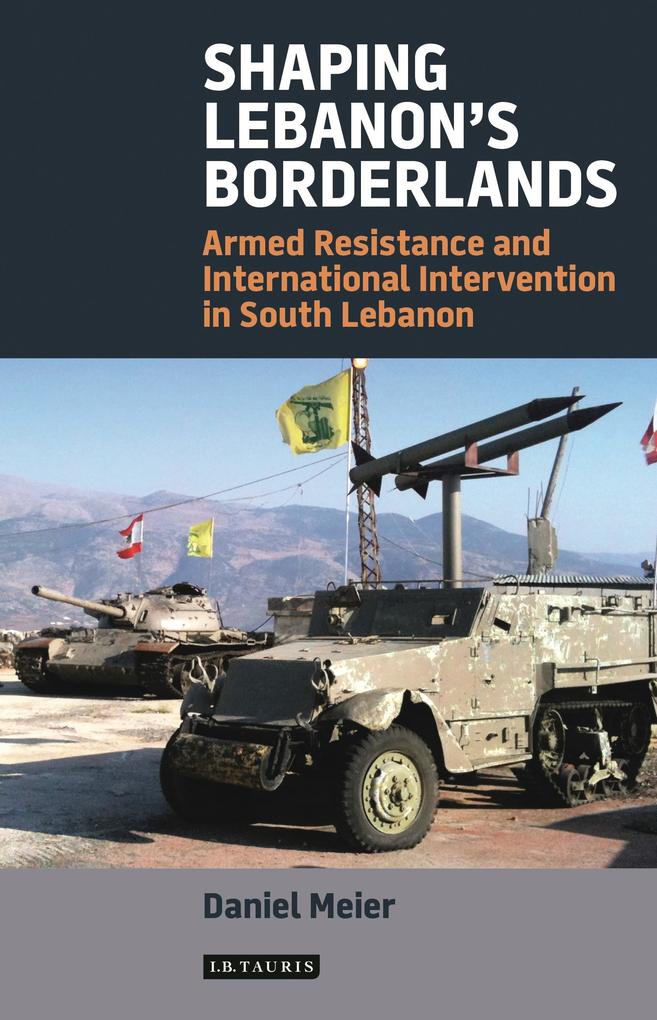
Zustellung: Sa, 26.07. - Fr, 01.08.
Versand in 3-4 Wochen
VersandkostenfreiRegional struggles, wars and local confrontations have marked the south of Lebanon since the end of the 1960s. They have transformed this marginalized and rural region into a battlefield and redefined the relationships between international, regional and local actors. The most recent of these actors the Palestinian refugees and their armed resistance, the Islamic Shi i movement Hizbullah, and the UN local mission (UNIFIL) have marked and shaped the place, and in turn operating in this borderland has affected their identities. Based on Daniel Meier s extensive fieldwork in the region, this book offers interviews with militants, his own observations of this conflict-ridden and dangerous region as well as incisive political analysis concerning the armed militias operating in the area. It is through this in-depth examination of the southern borderlands of Lebanon that Meier sheds new light on some of the major Middle Eastern confrontations of the last half a century."
Inhaltsverzeichnis
Introduction: South Lebanon as a Vantage Point, 1923-2013
Chapter 1: The Fedayeen in Lebanon: Armed Struggle, Symbols and Belonging
Chapter 2: Hizbullah: Resistance as an Identity and as a Means
Chapter 3: The Struggle for the South: Israeli Occupation and Lebanese Resistance
Chapter 4: Using the Borderland: Hizbullah's Socio-Political and Cultural Strategy
Chapter 5: Crossing/Bypassing the Border: Palestinian Civil Resistance (Sumud)
Chapter 6: Hegemony over Geography: UNIFIL and the Drawing of the Blue Line
Chapter 7: The Pending Issues in the Southern Borderland: Maritime and Aerial Borders
Conclusion
Chapter 1: The Fedayeen in Lebanon: Armed Struggle, Symbols and Belonging
Chapter 2: Hizbullah: Resistance as an Identity and as a Means
Chapter 3: The Struggle for the South: Israeli Occupation and Lebanese Resistance
Chapter 4: Using the Borderland: Hizbullah's Socio-Political and Cultural Strategy
Chapter 5: Crossing/Bypassing the Border: Palestinian Civil Resistance (Sumud)
Chapter 6: Hegemony over Geography: UNIFIL and the Drawing of the Blue Line
Chapter 7: The Pending Issues in the Southern Borderland: Maritime and Aerial Borders
Conclusion
Mehr aus dieser Reihe
Produktdetails
Erscheinungsdatum
28. Juni 2016
Sprache
englisch
Seitenanzahl
306
Reihe
Bloomsbury 3PL
Autor/Autorin
Daniel Meier
Verlag/Hersteller
Produktart
gebunden
Gewicht
503 g
Größe (L/B/H)
216/140/19 mm
ISBN
9781784532536
Entdecken Sie mehr
Bewertungen
0 Bewertungen
Es wurden noch keine Bewertungen abgegeben. Schreiben Sie die erste Bewertung zu "Shaping Lebanon's Borderlands" und helfen Sie damit anderen bei der Kaufentscheidung.































